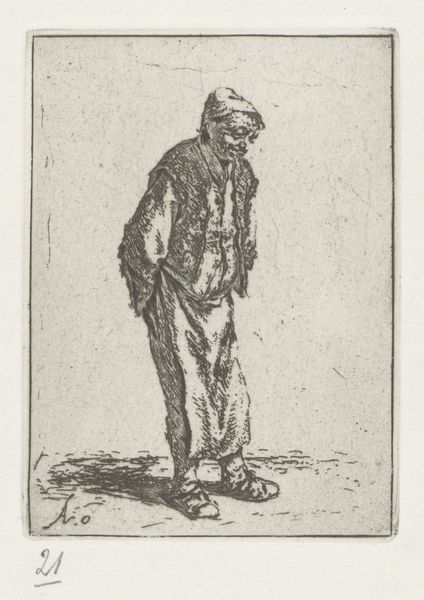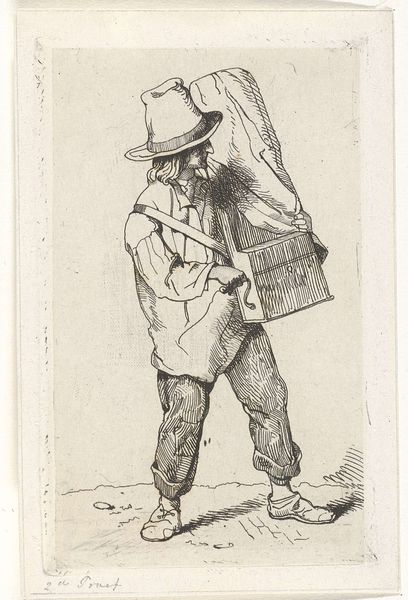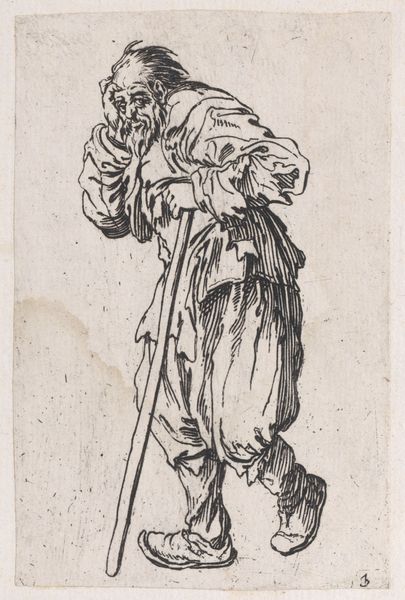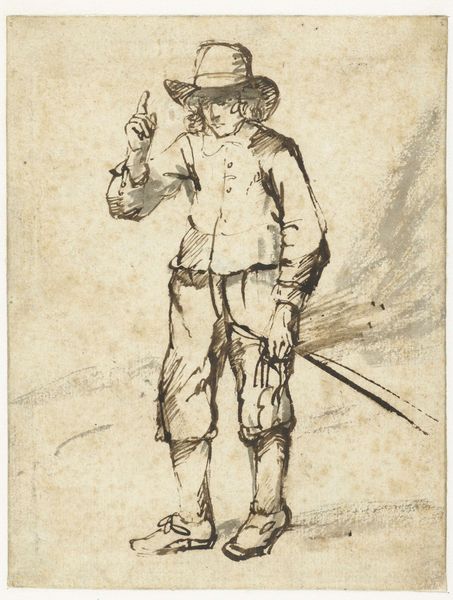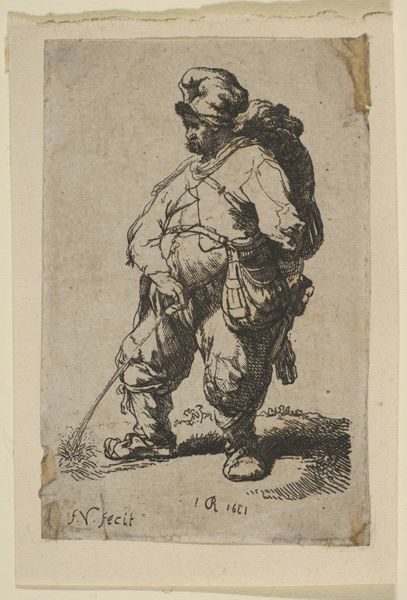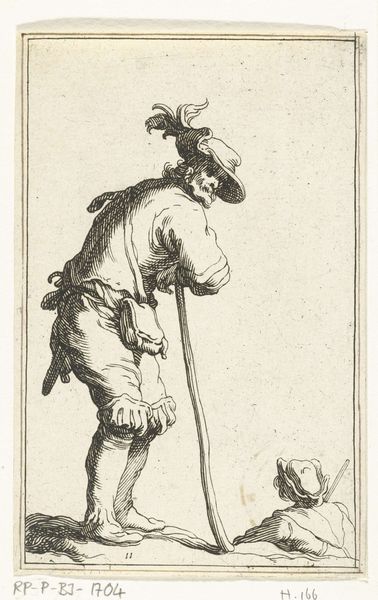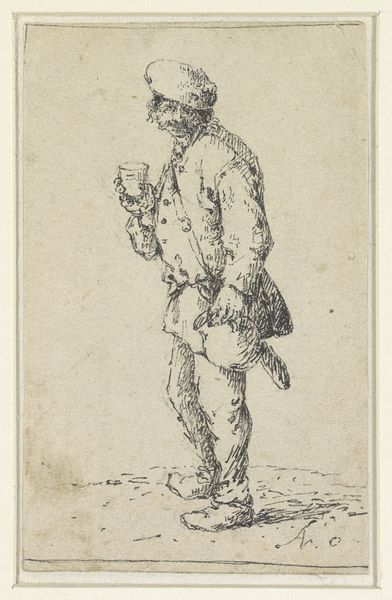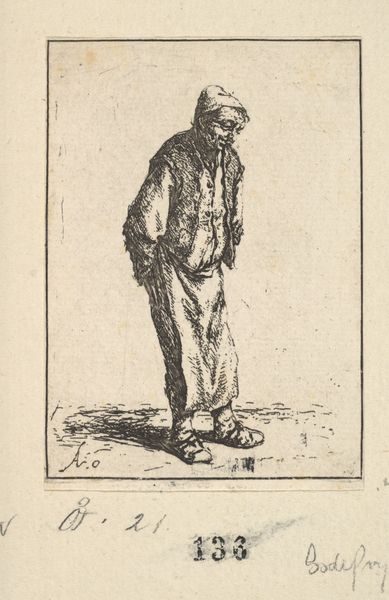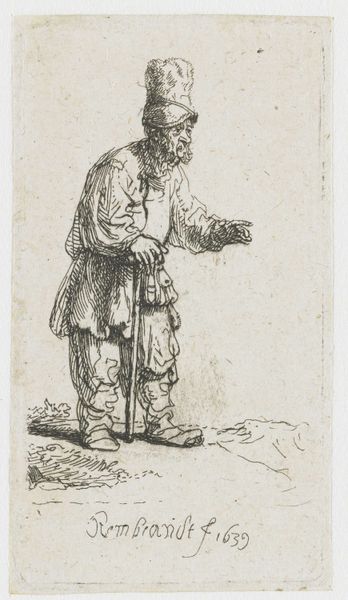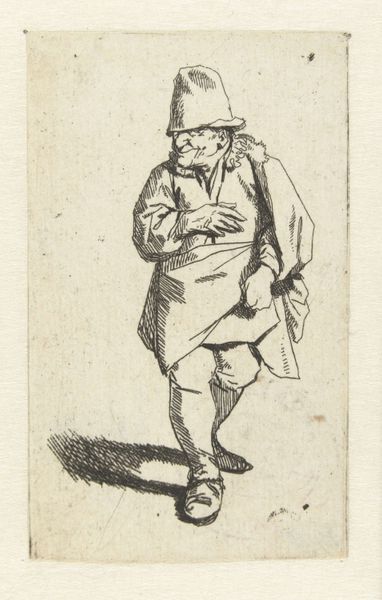
drawing, print
#
portrait
#
drawing
#
dutch-golden-age
# print
#
figuration
#
genre-painting
#
history-painting
#
realism
Dimensions: sheet: 3 3/8 x 2 1/2 in. (8.5 x 6.3 cm)
Copyright: Public Domain
Editor: We’re looking at Adriaen van Ostade’s etching "Peasant Wrapped in his Cloak," likely from the mid-17th century. It depicts a solitary figure, kind of hunched over. It strikes me as a poignant representation of someone struggling. What aspects of this artwork do you find most revealing? Curator: Well, I'm drawn to consider this piece within its historical context. Seventeenth-century Dutch art was greatly impacted by its socio-political climate, with artists grappling with religious conflicts, burgeoning trade, and social stratification. How do you see this piece reflecting or responding to that time? Editor: I guess it’s easy to assume it represents the less fortunate members of society, like everyday folks, but why immortalize such people through art? What value did society place on portraying these common people? Curator: Precisely! Before the Dutch Golden Age, history painting and portraiture were typically reserved for nobility. But here, the subject is distinctly…ordinary. Ostade’s choice highlights the rising influence of the middle class and their values, wouldn't you agree? Consider the rise of genre painting; art became increasingly commercial. How might this etching have circulated and been received? Editor: I hadn’t thought about the commercial aspect so much. Probably reproduced as prints and distributed fairly widely? That’s so interesting! Thanks for shedding some light on the public’s perspective on these works. Curator: Indeed. Examining its historical placement allows us to understand this etching not just as an individual portrait but as a reflection of societal shifts and evolving artistic patronage. Ostade’s choice invites viewers to engage with social realities beyond the lives of the elite.
Comments
No comments
Be the first to comment and join the conversation on the ultimate creative platform.

